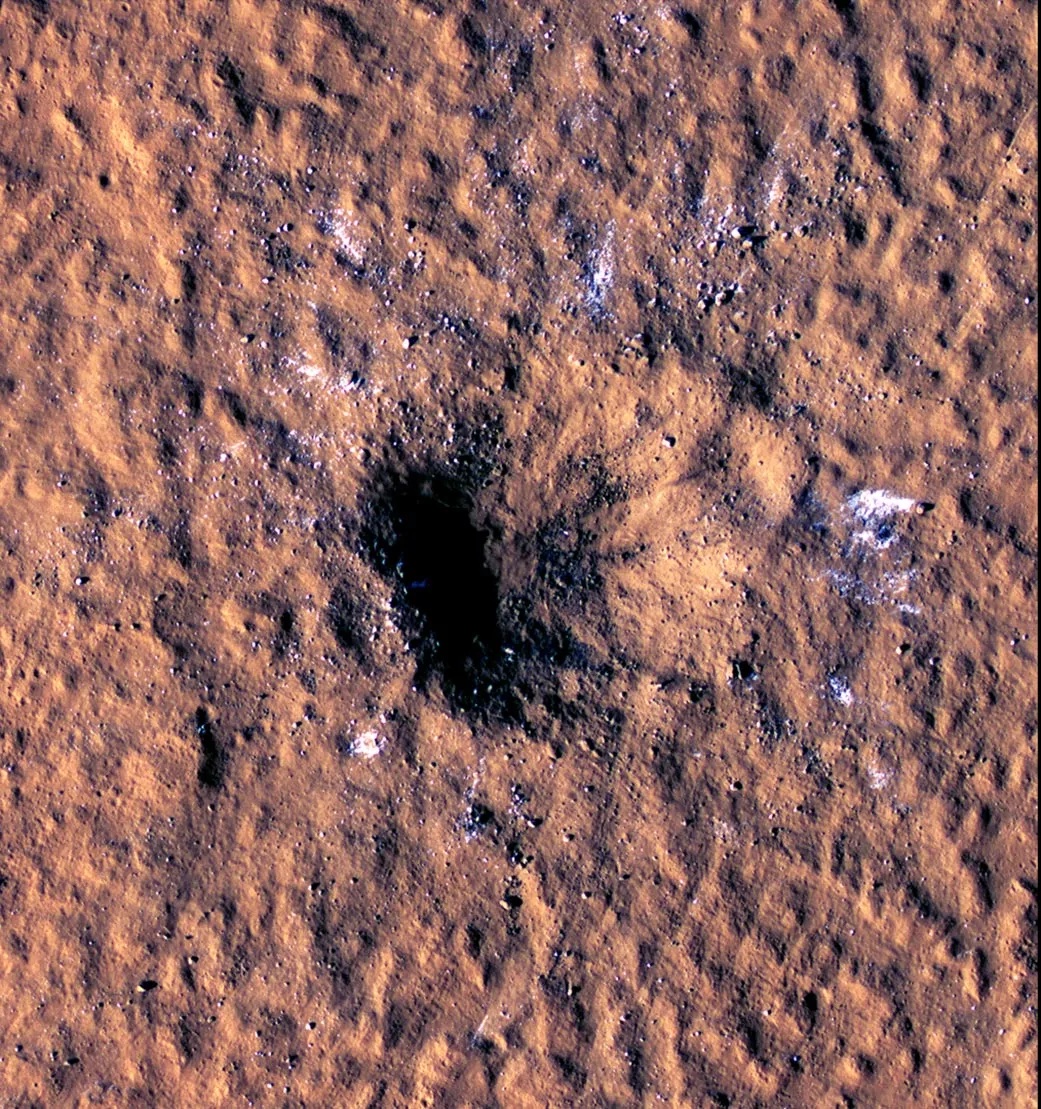Mars may face more than twice as many close encounters with potentially dangerous asteroids as Earth does, according to a new study. This could imperil exploratory missions to the Red Planet, but also provide insight into how the inner solar system formed.
Asteroids constitute the biggest threat from space to our planet — the 2013 Chelyabinsk meteor, for example, generated shock waves that injured over 1,000 people and caused more than $33 million in damage to infrastructure.
Astronomers and citizen asteroid hunters have detected around 33,000 similar space rocks that whiz closely past Earth during their orbit of the sun. A fraction of them are huge ― more than 460 feet (140 meters) in diameter ― and whirl on paths that approach Earth’s orbit at distances of less than 0.05 astronomical unit (AU). (For reference, 1 AU is around 93 million miles, or 150 million kilometers ― the average distance between Earth and the sun.) Tracking such potentially hazardous asteroids (PHAs) is a key component of planetary defense programs.
Neighboring Mars should have it worse, since it lies right next to the main belt — a planet-free stretch of rocky debris between the orbits of Mars and Jupiter. But precisely how many asteroids swing past Mars isn’t clear. This could be a problem, study co-author Yufan Fane Zhou, a doctoral student in astronomy at Nanjing University in China, told Live Science in an email; Mars hosts many current missions and may be home to human colonies someday.
To test whether humans on the Red Planet would be more at risk of potentially devastating impacts, Zhou and colleagues at Nanjing University analyzed how many asteroids make close approaches to Mars. They dubbed these space rocks “CAPHAs,” an acronym for “close approach potentially hazardous asteroids.”
To determine the number of Mars CAPHAs, the team used computer models to simulate the movement of all eight planets and around 11,000 randomly chosen asteroids over 100 million years. All of these asteroids started out in the main belt. Then, looking at each asteroid’s proximity to six known gaps — asteroid-poor zones within the main belt where runaway rocks could potentially slip out — the team classified about 10,000 asteroids as “near-gap.”
Related: Hundreds of black ‘spiders’ spotted in mysterious ‘Inca City’ on Mars in new satellite photos

During the simulations, the researchers made the near-gap asteroids drift away or toward the sun. This drift arises due to the Yarkovsky effect, a force generated when the sunlit surfaces of asteroids re-radiate the energy they receive, behaving like mini-thrusters. Simulating this drift is critical because over the course of millennia, it causes the near-gap asteroids to meander into the gaps. Once there, periodic gravitational tugs from Jupiter or Saturn warp the paths of these asteroids, sending them on potential collision courses with the inner planets.
The simulations revealed that every Earth year, about 52 large asteroids wander dangerously close to Mars — about 2.6 times more than the 20 or so that approach Earth annually. Although these asteroids come closer to Mars than the Earth CAPHAs do to our planet, they also travel more slowly.
NASA missions may have already witnessed the effects of some of these asteroids colliding with Mars; a meteorite impact on Dec. 24, 2021, caused a magnitude 4 marsquake that was picked up by NASA’s Mars InSight lander.
Although Zhou was ambivalent about whether near-Mars objects may affect current missions, he noted that, in the future, “as human visits to Mars become more frequent, the threat posed by Mars-CAPHAs may increasingly be taken seriously.”
Yet the Mars-CAPHAs could also be informative for astronomers. “Asteroids around Mars can also deepen our understanding of the Martian environment, the interactions between asteroids and planets, and the evolutionary history of the inner solar system,” Zhou said. In fact, Zhou and colleagues suggest that at least two of these CAPHAs may even be visible from Earth in early 2025, when Mars will lie on a line with Earth while orbiting on the same side of the sun.
The research was published online May 9 in the journal Monthly Notices of the Royal Astronomical Society: Letters.





